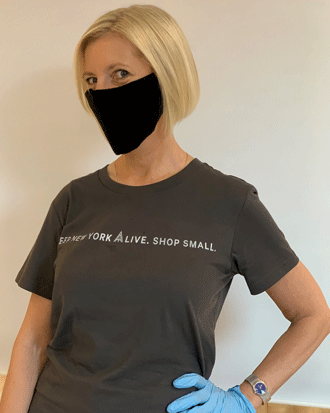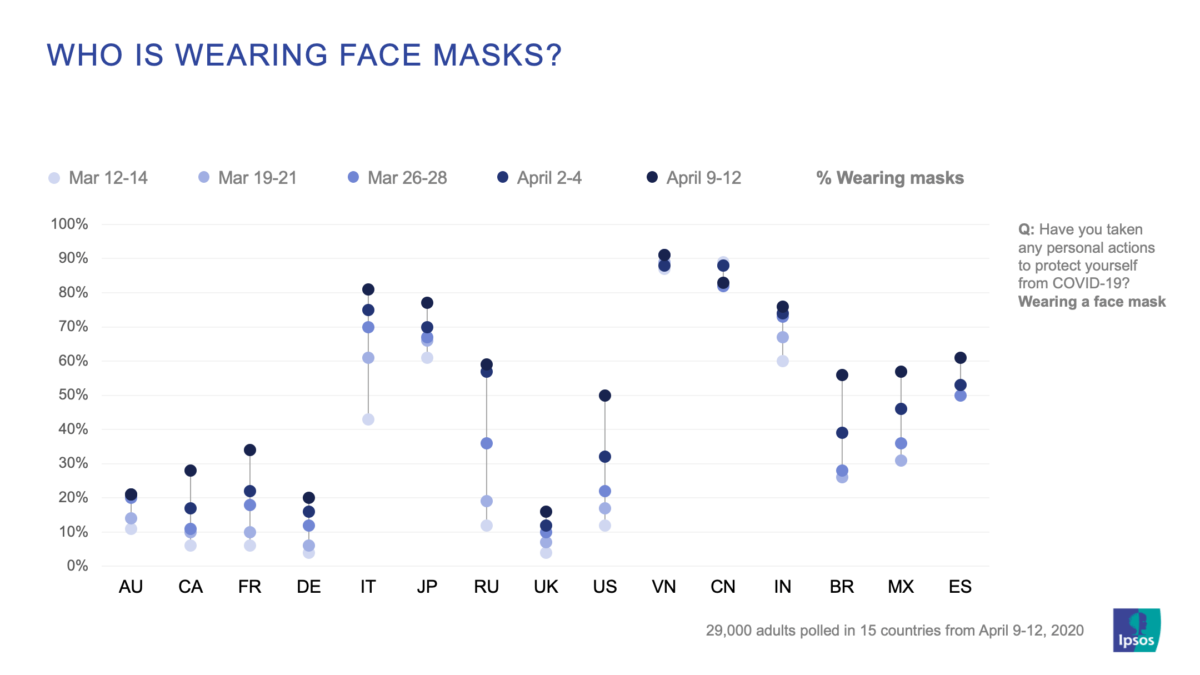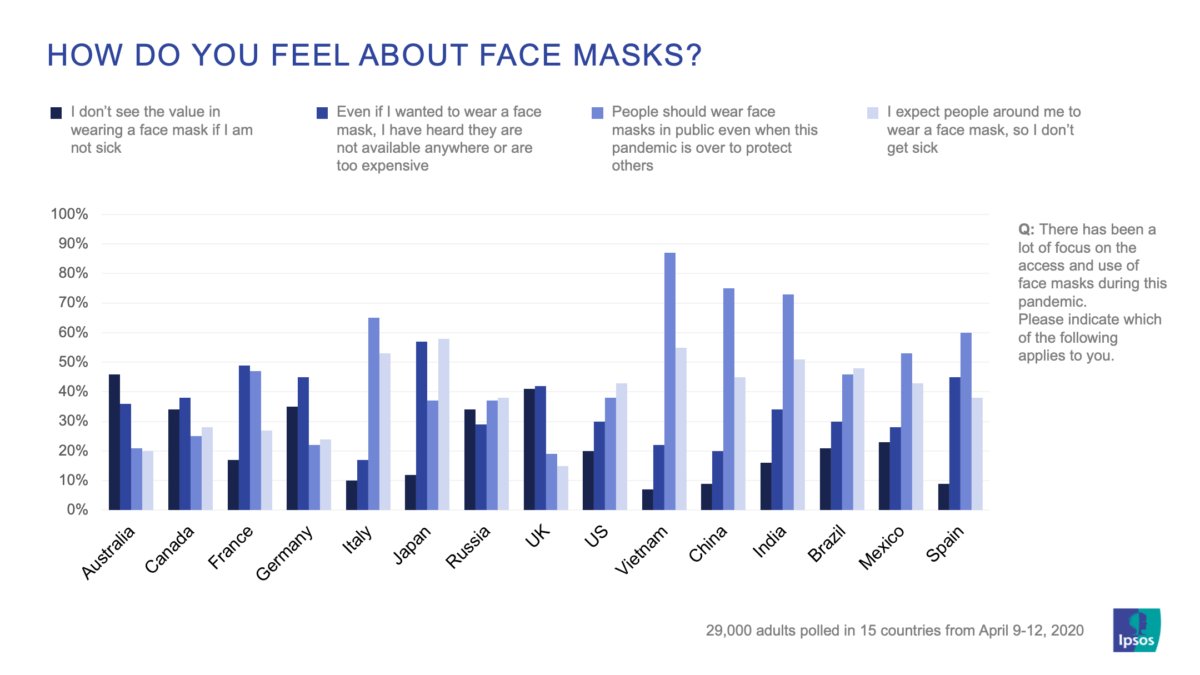
MESH Experience
Masked gunmen, disempowered women, hiding behind…
These are probably some of the things that used to immediately spring to mind when thinking about masks.
But we are in a pandemic. 77,000 new coronavirus cases were reported yesterday in the US, over 140,000 people have died here so far. There was a shortage of masks early in the crisis and people were torn between trying to get hold of masks and leaving them for those on the front line. They were a scarce commodity and therefore highly desired and prized.
Now wearing a mask has become politicized. And the voices of the medical fraternity are being ignored. We have even had the Governor of Georgia suing the Atlanta mayor over mandating mask wearing this week!
How can the research discipline help?
We have techniques to help understand people’s attitudes and behaviours. IPSOS research demonstrated how Asian countries were far more likely to wear masks than Europe and the US in early April. The COVID-19 case and death figures since then tell a tale of, at the very least, correlation.

IPSOS also showed the reasons behind these figures.

In Italy and Spain, stricken by the pandemic in April, it is interesting to see how many agreed that people should wear face masks in public to protect others. This indicates that the experience of the pandemic was influencing attitudes and therefore behavior.
We also have Behavioural Economics. I called on industry expert, Mark Earls, author of “Herd”, “Copy, Copy, Copy” and “I’ll Have What She’s Having” to help by giving us his top tips to encourage mask wearing.
“Three strategies that ping out immediately:
1. Show how everyone else is doing it (it’s what we do around here)
2. Show the kind of person that is and that isn’t (force the in- and out-group sensibilities)
3. Who do these people look to for fashion* or medical advice? Get them to wear masks! (*The influentials strategy in the broadest sense)”
And we have a bonus from Mark!
“My fave is always to use the social proof thing indirectly: redefine the frame – make it a competition – make it about personal expression rather than compliance – masks are always about disguise and deception in our culture. Can you exploit this?
Frankly, I don’t really care why people do it – just that they do it. Too many behaviour change campaigns focus on winning the argument for the behaviour. Just get them to ******* do the thing and then help them explain it to themselves later…”
Taking Mark’s thoughts here, there have been public information ads encouraging mask-wearing, including “A Mask is Just a Mask” by Wieden-Kennedy to help Oregonians to understand the importance of wearing face masks. But do people pay heed to Governor Kate Brown and her campaign? Seeing healthcare professionals, like nurses and doctors, urging New Yorkers to wear masks, I feel had some impact. These were the heroes we were cheering for at 7pm every evening.
It is great to see advertisers featuring people in masks. Amazon’s ad, “Meet Ricardo” features Ricardo and others in the distribution depot wearing face masks. Dominos Pizza ads show how staff don’t “frisbee” the pizza into your car but pop it into the trunk/boot – socially distanced and masked. These are the people we rely upon to receive deliveries to our door and to keep our spirits up with our favourite foods. Just as advertisers are keen to portray diversity in their ads, more of them could take a positive decision to save lives by portraying people in masks.
Through the news media in the US, we have seen political rallies with virtually no-one socially distancing or wearing a mask and reporters frequently don’t wear their masks when speaking to camera. We saw news reports showing narrow streets in Soho, London, packed with people enjoying bars without wearing masks. These images do exactly the opposite of what Mark recommends. The coolest bars should be mandating masks as a fashion statement. Like bouncers on the doors of clubs, only those with the right “mask-wearing look” should get in.
Encouragingly, a number of companies including Walmart, Target, CVS Health, Best Buy and Kroger have all announced mandatory face coverings this week. This should help the behaviour change Mark mentions – no mask, no groceries, clothes, toiletries or electronics!
We can all help to make mask-wearing normal, stylish and a badge of honour, one person at a time. I am changing my social media photos to one in a mask during the pandemic. It is a small action, but perhaps if others follow suit it will create a herd mask-wearing mentality, even if we don’t achieve herd immunity.
If you want to join the mask-wearing herd, to save lives, these are things you can do:
- Change your social media photos to one in a mask
- Encourage the media to show more people in masks
- Encourage more advertisers to show people in masks
- Include messages on your mask to remind others that you are doing this for them, not you
- Be the envy of the mask-wearing ball!


